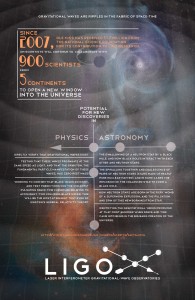OXFORD, Miss. – The study of particle collisions around black holes by physicists at the University of Mississippi was published in the latest issue of Physical Review Letters.
The study, which is also featured as a Physics Focus story by the American Physical Society, was conducted by Emanuele Berti, associate professor of physics and astronomy at UM, and Vitor Cardoso, a UM adjunct professor in Lisbon, Portugal. The two have a long-standing collaboration on black hole physics and Einstein’s theory of relativity.
Their latest work studies the possibility that particles around rotating black holes could “steal” some of the black hole’s rotational energy and be ejected with very high energies.
“A similar process was first studied by Sir Roger Penrose almost 50 years ago,” Berti said. “Penrose realized that if a body disintegrates in two fragments close to a black hole, one of the fragments could fly out with energy larger than the initial body, extracting energy from the black hole.”
The duo has examined what might happen if two particles collide, instead of letting one particle disintegrate.
“We found a surprising result,” Cardoso said. “When one of the colliding particles is initially outward-directed, in some case the collision products could have more than a million times the energy of the colliding particles.”
Collisions around rotating black holes were previously studied by Jeremy Schnittman, a researcher at NASA’s Goddard Space Flight Center. In Schnittman’s work, the outward-directed particle is one that has made a “U-turn” around the black hole.
In the new energy extraction mechanism considered by Berti and colleagues, the outward-directed particle must have been produced by previous particle collisions.
“It’s worth noting that if one works backwards and accounts for the energy that goes into the pre-collision, then the overall gains are in the same range as Schnittman’s,” Cardoso said. “However, we think that just a few ‘U-turn particles’ of the kind envisaged by Schnittman could produce cascades of efficient collisions that would ratchet up the outbound particle’s energy.”
Richard Brito, a doctoral student at CENTRA/Instituto Superior Tecnico in Lisbon who co-authored the article with Berti and Cardoso, notes that the colliding particles could be made of elusive dark matter. Then the detection of collision products – for example, gamma rays – could provide hints at the nature of dark matter. Furthermore, variants of this “collisional Penrose process” may power gamma rays and ultra-high-energy cosmic rays.
To view the Focus story, visit http://physics.aps.org/articles/v8/60. For the UM article in PRL, visit http://arxiv.org/abs/1410.8534. For more information about the UM Department of Physics and Astronomy, go to http://www.olemiss.edu/depts/physics_and_astronomy/.
